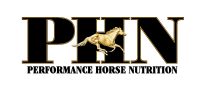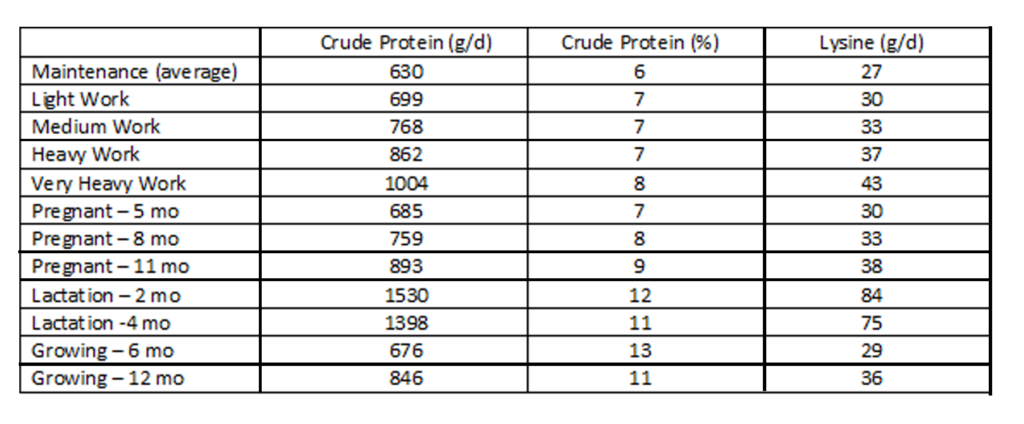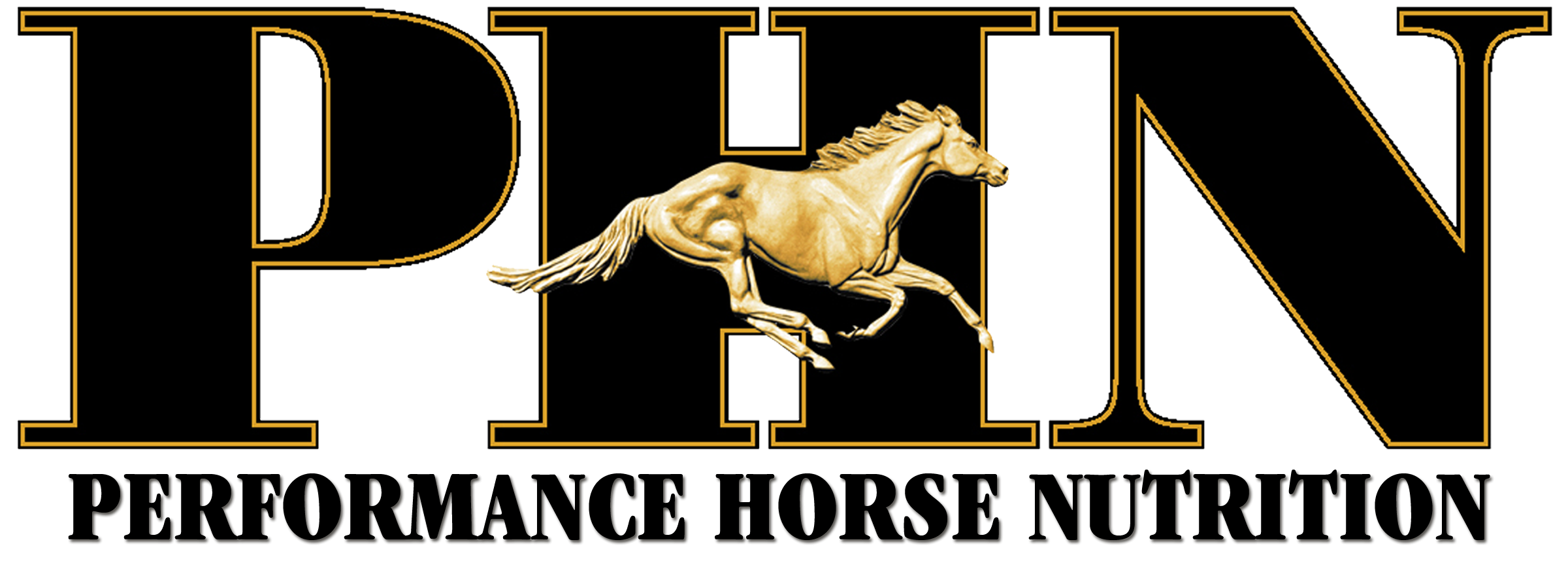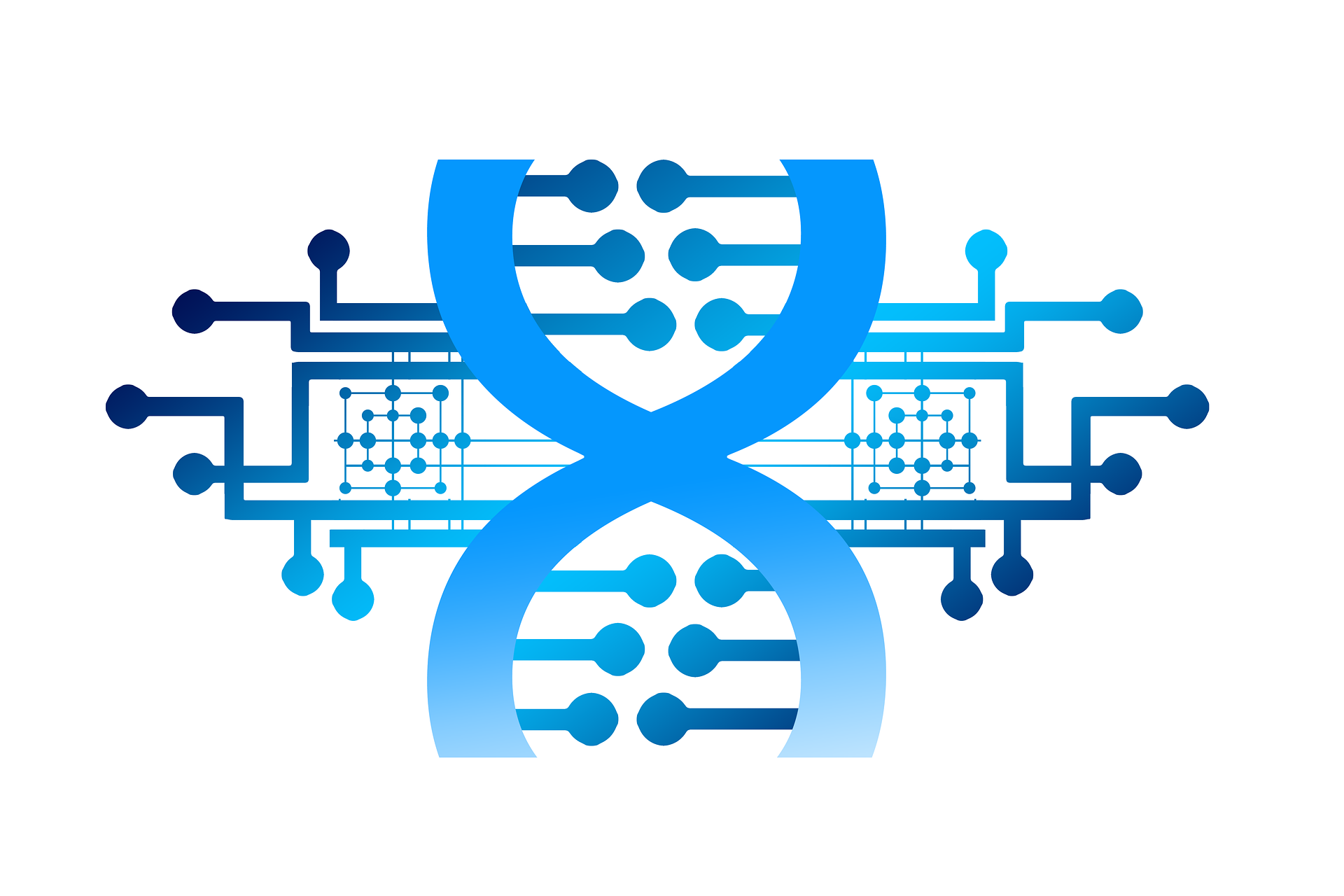PROTEIN
FRIEND OR FOE IN EQUINE DIETS
MAY 2020

Written by Performance Horse Nutrition
The word protein was derived from the Greek word proteos, meaning “of primary importance,” an appropriate name in light of all of the critical roles that proteins play in the body. Protein makes up approximately 15% of total body mass, with the muscle containing the largest portion of the body’s protein. Some of the key functions of proteins include providing structure, nutrient transport in the blood stream, nutrient transport across cell membranes, regulation of metabolic function, as a component of the immune system, and as a buffer to minimize fluctuations in body pH.
Proteins are composed of units called amino acids. Although there are 21 different amino acids that are needed for protein synthesis, several can be made by the tissues of the body. Amino acids that must be provided in the diet are referred to as indispensable (essential) amino acids, and amino acids that the animal can make through its own metabolic pathways are termed dispensable (non-essential) amino acids. In horses, the amino acids that are classified as essential are: histidine, isoleucine, leucine, lysine, methionine, phenylalanine, threonine, tryptophan and valine. Lysine is the amino acid most often lacking in growing horse rations. The lysine requirement for weanlings is 0.6 – 0.7% of the diet and for yearlings 0.5% of the diet. No other amino acid requirements have been determined for the horse.
Considering all of the critical roles of proteins and amino acids in the horse, it is important to ensure that adequate amounts of protein and amino acids are provided in the diet. In order to provide adequate dietary protein and amino acids, it is important to have an understanding of how protein is digested and absorbed, the different dietary sources of protein available to the horse, and the protein and amino acid requirements for horses of various ages and physiological states.
Protein Digestion:
In order for the horse to be able to utilize dietary protein throughout the body they must first be digested into individual amino acids and small peptides. Protein digestion begins in the stomach, with the release of acid and digestive enzymes which breaks down the protein chains. Protein digestion continues through the small intestine by the activity of enzymes secreted from the pancreas into the small intestine. The end product of the small intestinal protein digestion processes are free amino acids, which are available for absorption into the blood stream to be used for various functions throughout the body. The absorption rates of individual amino acids are highly dependent on the protein source.
Protein Requirements:
In comparison to other species, relatively little is known about essential amino acid requirements of horses, or how these change throughout the lifespan, and therefore protein requirements for horses are generally expressed on a crude protein basis. To date lysine is the only amino acid that has an assessed requirement in horses. Table 1 outlines the crude protein and lysine requirements for different activity levels and life stages in horses.
Table 1. Crude Protein and Lysine Requirements for Horses with an Expected Mature Body Weight of 1100 lb

(Data from National Research Council 2007; % CP based on feed intakes of 2.5% of BW for heavy, and very heavy work, lactating mares, and growing horses; 2.25% of BW for medium work; and 2% of BW for all other classes)
Protein Deficiency:
Symptoms of dietary protein deficiency in horses are similar to the symptoms in other mammals: general non-thriftiness, depressed feed intake, weight loss, and poor hoof and hair coat quality. If an essential amino acid is deficient in growing horses, this will be reflected by lower rates of average daily gain, whereas a limiting amino acid during lactation could reduce milk protein and amino acid content and reduce rates of foal growth. Other studies have also reported reduced milk production, increased weight loss in mares and reduced rates of foal growth if insufficient dietary protein is provided during lactation. Because exercise training appears to increase lean mass and total nitrogen retention; in athletic horses that do not consume enough essential amino acids to maintain their increased muscle mass or replace nitrogen losses in sweat, will begin to deplete the plasma amino acid pool or lose muscle mass, resulting in increased nitrogen excretion.
Protein Sources:
Not all protein sources are the same – some are of a higher quality than others. Quality of a dietary protein is determined by the amount and proportion of essential amino acids it provides. To increase the quality of protein in commercial horse feeds the amino acids Lysine; Threonine and possibly Methionine are most likely to be added.
Seed meals –
When oil is extracted from the oil seeds such as soybean, sunflower, canola, cottonseed, flaxseed etc., the remaining seed meal is a high protein by-product that may be used in livestock feeds. Soybean meal is the most commonly used seed meal in horse feeds because it is widely available and relatively inexpensive. It has 44 – 48% crude protein (CP) content on an as-fed basis. Soybean meal is especially high in lysine, which is commonly low in most grains. Soybeans should not be fed to horses in their raw form. In the raw form they contain an inhibitor of protein digestion in the horse. The amino acid profile of soybean meal is superior to most other seed meals. Cottonseed meal, sunflower seed meal, safflower meal, peanut meal, canola meal and sesame meal are all comparatively low in lysine.
Cereal Grains and Grain By-Products –
Cereal grains are incorporated into horse diets for energy, but they do provide protein some amino acids as well. Cereal grains do not contain high quality protein. Consequently grain by-products often contain moderate or low quality protein, even though they may be relatively high in crude protein. Therefore the amino acid content of by-product feeds should be considered when they are incorporated into horse feeds, especially if their inclusion reduces the use of ingredients with higher quality protein.
Forages –
Forages (hay, pasture, bagged forage products, etc) are the most important components of horse diets and can be excellent sources of protein and amino acids. However, forages can also be extremely variable in nutrient content. Legumes that are used as forages for horses include alfalfa, various types of clover, lespedeza, and varieties of peanut, pea, lupin and soybean that have been selected for forage production. Alfalfa is a high quality source of protein due to its elevated lysine content compared to most other forages. The crude protein concentration in common legume forages will usually exceed 14% on a dry matter basis (even greater than 17% in some west coast alfalfa). Grasses are usually lower in crude protein than legumes. Crude protein content of forages is highest when the plant is in a vegetative stage of growth and is lowest when the plant is in a late stage of maturity. Understanding the value of your forage and pairing it with a commercial feed that has been designed to complement the quality of forages available in the Western United States will help keep feeding costs down and be much healthier for your horse.
Can you feed too much protein?
What happens to protein fed in excess of requirements? Since dietary proteins (amino acids) are not stored in the body as surplus, any extra is broken down and used as an immediate energy source or stored as fat. Protein which is used for energy has the added tax associated with disposal of the nitrogen connected to the protein. The nitrogen is filtered out of the blood by the kidneys and voided in the urine. Contrary to popular belief, dealing with this by-product of protein conversion is not “hard on the horse’s kidneys” unless they have been overtaxed in some other way. The additional water necessary to void nitrogen in the urine may be critical if horses have limited access to water. As a practical recommendation, select alfalfa hays which do not contain extremely high levels of protein (greater than 17% crude protein) and always follow the feeding directions on bagged feeds.
Animal Proteins –
Such as meat scraps or blood meal are not acceptable in horse rations as they are unpalatable, have limited digestibility and can manifest toxic bacteria and ultimately cause death.
Summary:
Horses receive their dietary amino acids from three key sources: forage, cereal grains and seed meals. There are also many supplements currently being marketed for a variety of purposes that contain individual amino acids; however, at this time there is insufficient data to verify the majority of the supplement claims.

